Anti-uninstall extension on Google Chrome, Firefox and Internet Explore
The installation of add-ons on the browser will help users pretty much in the process of use. Besides, completely removing or disabling add-ons is relatively simple and easy. In this article, Network Administrator will show you how to protect important extensions on 3 Google Chrome and FireFox browsers, Internet Explorer before the vandalism when others use your computer.
- Instructions to restore Bookmark in Google Chrome and Firefox
- 44 shortcuts are useful on all browsers
- Fix Flash Plugin errors on Firefox and Coc Coc
1. Anti-uninstall extension on Google Chrome:
Note , this approach will be applied to the old version of Chrome, but the new version is no longer available.
Step 1:
Press the Windows + R key combination to open the Run dialog box. Then enter the Regedi t command and press OK to access.

Step 2:
In the Registry Editor interface, we search the directory in the left menu according to the following path:
HKEY_LOCAL_MACHINESoftwarePolicies

Step 3:
Here, right-click the Policies and select New, then select Key .
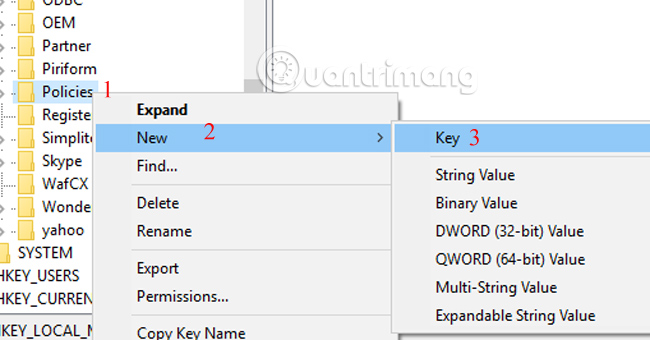
We will name the new key, Google . Then create another subkey inside Google and name it Chrome .
Once you have created the Chrome subkey, right-click Chrome to create a new subkey and name it ExtensionInstallForcelist . As such, there have been 3 additional subkeys set up in the Policies.
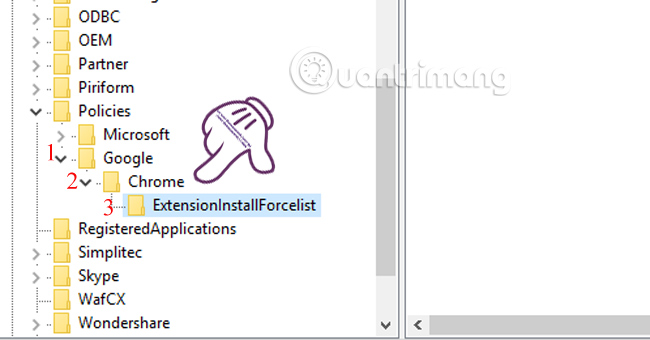
Step 4:
At the empty space of the ExtensionInstallForcelist subkey, right-click and choose New, then choose String Value and name the value 1.
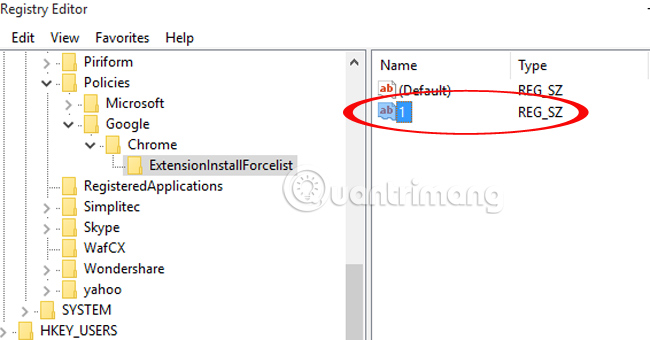
Step 5:
Open Chrome browser and go to the extension settings page on Chrome Web Store, which is being used in the browser you want to remove. Then, copy the text at the end of the URL of the gadget in the address bar .
We will do it with the add-ons address:
https://chrome.google.com/webstore/detail/mauf-custom-colors-for-fa/jfjnmganegfpajpgchndgfjbljnehink
So the copy will be jfjnmganegfpajpgchndgfjbljnehink
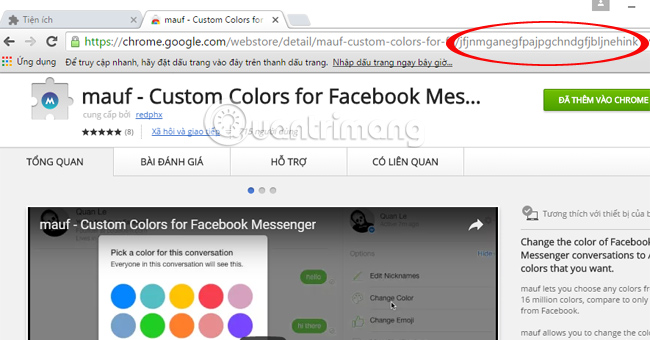
Step 6:
Go back to the Registry Editor interface and the new ExtensionInstallForcelist key, double-click the previously created value 1.
In the Value data box, you'll paste the URL of the gadget just copied in front of the line :
https://clients2.google.com/service/update2/crx
Then click OK to save.
For example:
jfjnmganegfpajpgchndgfjbljnehink; https: //clients2.google.com/service/update2/crx
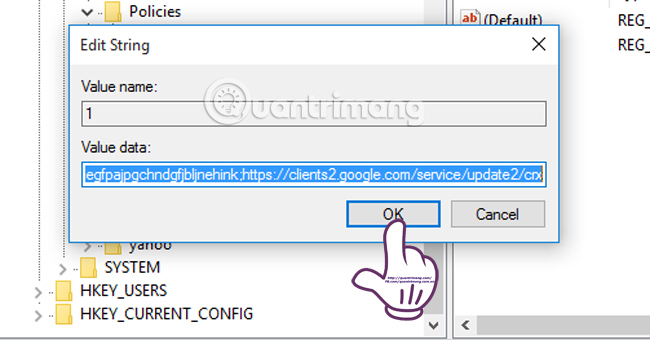
Finally, you will turn off Chrome and reboot to update the settings. Try right-clicking on the utility on the toolbar, you will see the uninstall utility option has been blurred. It is also not possible to disable the utility set up in the browser extensions management page.
Similarly, you can set the next value (2, 3, 4, .) in the ExtensionInstallForcelist key to prevent removal for add-ons, other installation applications in Chrome. If you want to temporarily stop the removal, you just delete the value (Vlaue data) of that extension or delete the Google key to remove the anti-uninstall feature.
2. Anti-uninstall utility in Firefox:
Firfoxe's browser method is relatively simple, when you only need to install Public Fox utility.
Step 1:
Visit the address below to install the Public Fox utility. Next, select Add to Fire Fox to install.
https://addons.mozilla.org/en-US/firefox/addon/public-fox/

Then, click Restart now to complete the utility installation.
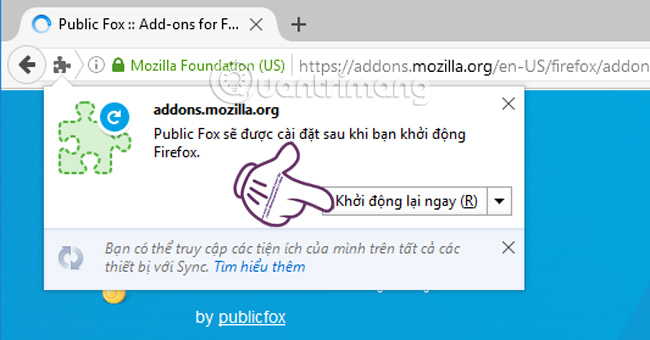
Step 2:
Open the browser again, go to the 3 horizontal bar icon and select Utilities .
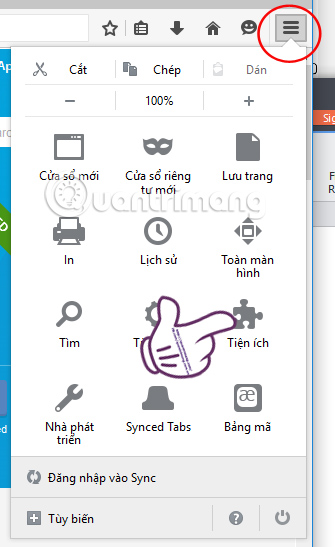
Step 3:
At the utility that installed Public Fox, click on Options .
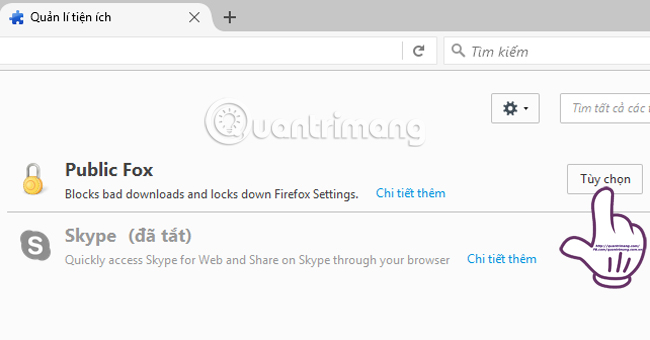
Step 4:
In the Public Fox Options interface, check the Lock Add-ons windows box (so users won't uninstall this) . Then, set the password in the Lock Password box in the section below. Click OK to save.

Step 5:
From now on, a password is required to access the browser utility. And of course, this password will only know you.
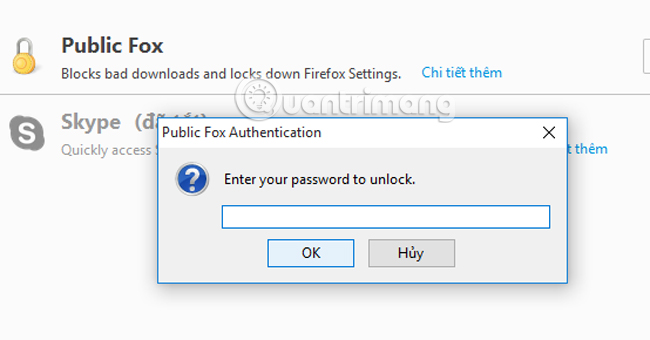
3. Block add-ons removal on Internet Explorer:
Like Chrome, Internet Explorer also needs to interfere with the Registry.
Step 1:
At the interface of Registry Editor , you access the following directory:
HKEY_CURRENT_USER> Software> Policies> Microsoft
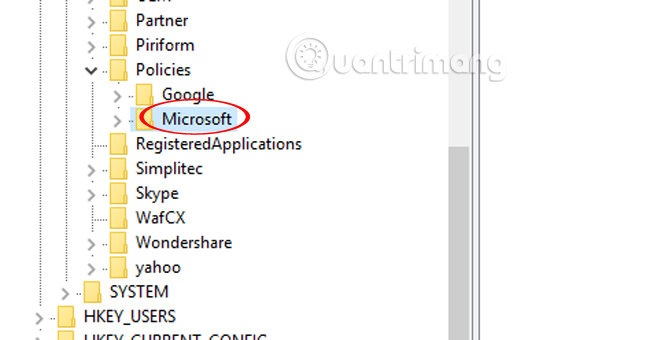
Step 2:
Right-click on Microsoft select New> Key to create a subkey named Internet Explorer .
Then, in Internet Explorer, you also set a new subkey called Restrictions .
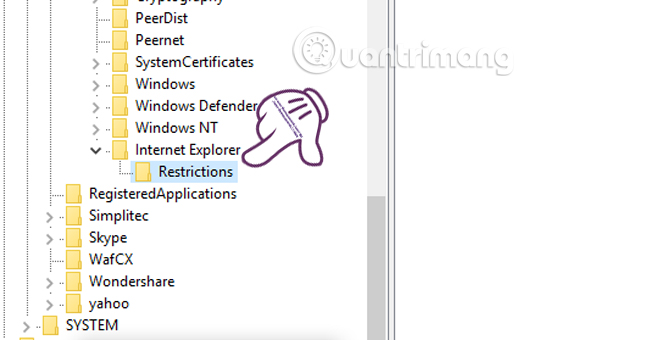
Step 3:
Then, right-click on Restrictions key, select New> String Value> and give NoExtensionManagement value .
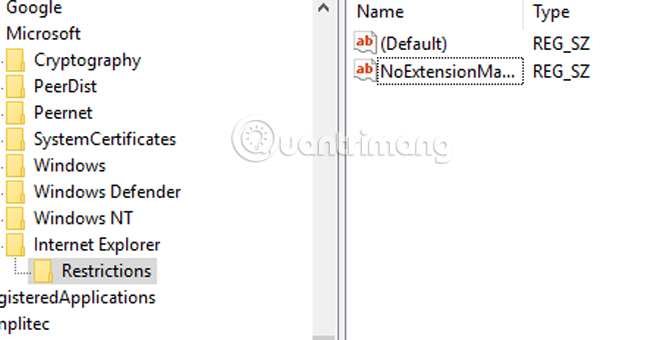
Next, we double click on NoExtensionManagement and write 1 to Value data . Click OK to save the settings.
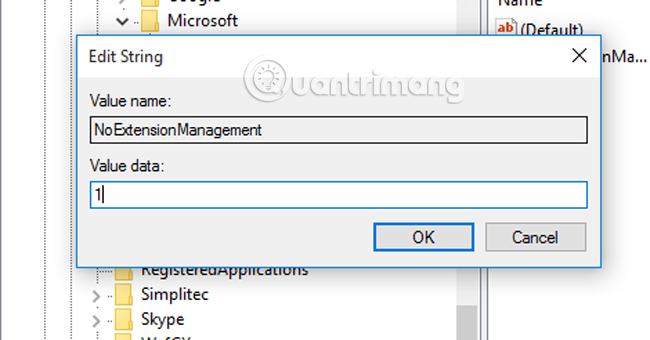
Step 4:
Turn on Internet Explorer, click on the wheel icon (or shortcut Alt + X) and select Manage add-ons .
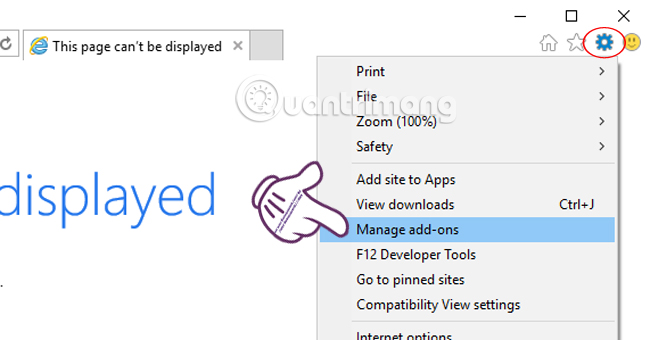
Step 5:
In the Toolbars and Extension section on the left, you click on the utility installed on the browser on the right frame and see the option to enable (Enable) and disable (Disable) has been blurred , can not click to select .
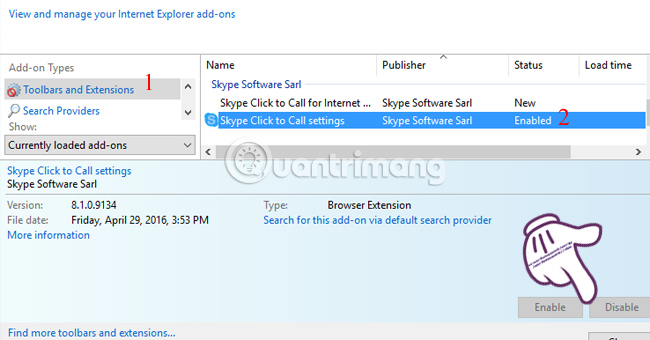
As such, we showed you how to do a detailed removal of the removal of extensions on Google Chrome, Firefox and Internet Explorer browsers. As for Chrome, we will quickly update it when there is a way to block the removal of add-ons with the new version of the browser to the reader.
Refer to the following articles:
- Set up Safari or Opera as the system's default browser
- Instructions for changing the default web browser in Windows 7
- 2 ways to copy web content without copying
I wish you all success!
You should read it
- IE continues to lead the browser market share, far behind Firefox and Chrome
- How to restore Chrome, Firefox, IE browser to the default state?
- The unpatched bug affects the utility system on Chrome, Firefox and Safari
- Simple way to speed up Firefox browser
- How to set the default browser when opening any link on the computer
- The dominant rate of web browsers
- Chrome is about to take second place of Firefox
- Google Chrome won the 'runner-up' in the UK
May be interested
- Chrome is about to take second place of Firefox
 statcounter data shows that, by december 2011, google's browser will surpass firefox, reaching no. 2 after ie.
statcounter data shows that, by december 2011, google's browser will surpass firefox, reaching no. 2 after ie. - How to Uninstall Google Chrome
 below wikihow will show you how to uninstall the google chrome browser from your computer and mobile device.
below wikihow will show you how to uninstall the google chrome browser from your computer and mobile device. - Google Chrome and Firefox, which browser 'consumes' more RAM?
 to test whether chrome or firefox consume more ram on a user's computer, business insider technology has done some tests.
to test whether chrome or firefox consume more ram on a user's computer, business insider technology has done some tests. - How to transfer all data from Chrome to Firefox
 if you intend to switch to firefox quantum from chrome, firefox can import bookmarks, saved passwords, browser history and cookies directly from google chrome. it can also import this data from microsoft edge or internet explorer.
if you intend to switch to firefox quantum from chrome, firefox can import bookmarks, saved passwords, browser history and cookies directly from google chrome. it can also import this data from microsoft edge or internet explorer. - Pros and cons of Google Chrome
 this article is for people who are interested in learning more about chrome and want to compare it with competitors. the latest stable version is version 69.
this article is for people who are interested in learning more about chrome and want to compare it with competitors. the latest stable version is version 69. - Chrome 23 browser makes battery 25% better
 the new version of google's browser adds the 'do not track' feature already available on both firefox, internet explorer, safari and opera.
the new version of google's browser adds the 'do not track' feature already available on both firefox, internet explorer, safari and opera. - 7 best Chrome extensions to increase your productivity
 when it comes to productivity and getting things done, google chrome can be your biggest resource. the right google chrome extensions are useful to help you stay focused on your goals.
when it comes to productivity and getting things done, google chrome can be your biggest resource. the right google chrome extensions are useful to help you stay focused on your goals. - Compare browser speed: Firefox 4, Internet Explorer 9, Chrome 11, Opera 11
 it has been nearly 1 month since the first quiet moments of the silent battle between browsers broke out, internet explorer and firefox have both released their latest versions, and chrome and opera are still going on. steady development ...
it has been nearly 1 month since the first quiet moments of the silent battle between browsers broke out, internet explorer and firefox have both released their latest versions, and chrome and opera are still going on. steady development ... - A malicious extension 'occupies' Chrome and Firefox browsers appears, preventing users from uninstalling
 malwarebytes, the famous security company, has discovered a malicious extension that appears in chrome and firefox browsers. if the user installs it, it is difficult to remove.
malwarebytes, the famous security company, has discovered a malicious extension that appears in chrome and firefox browsers. if the user installs it, it is difficult to remove. - How to restore Chrome, Firefox, IE browser to the default state?
 after a long time of use, google chrome, firefox or internet explorer web browsers fall into a slow, sluggish state. even cleaning up each browser but the situation is not improving. the best way you should recover ....
after a long time of use, google chrome, firefox or internet explorer web browsers fall into a slow, sluggish state. even cleaning up each browser but the situation is not improving. the best way you should recover ....










 Completely disable the extension for maximum browser security
Completely disable the extension for maximum browser security How to block Flash from accelerating Chrome browser
How to block Flash from accelerating Chrome browser The simple way to disable the implicit running of Chrome browser
The simple way to disable the implicit running of Chrome browser How to backup and restore web data with FavBackup
How to backup and restore web data with FavBackup Fix Chrome browser error showing a blank screen
Fix Chrome browser error showing a blank screen How to pin, pin a window of any Google Chrome?
How to pin, pin a window of any Google Chrome?